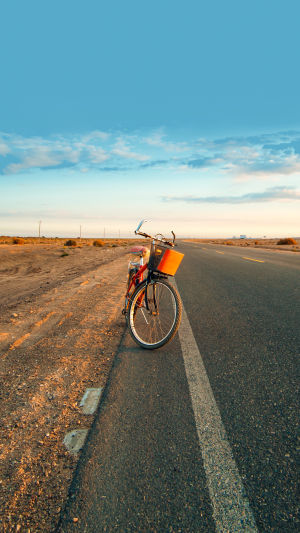Cycling on desert highways offers stunning landscapes and a sense of adventure. However, the desert’s challenging conditions require careful planning and the right equipment to ensure a safe and enjoyable experience.
Here’s a comprehensive guide on essential tips for biking through the desert with confidence.
<h3>1. Hydration: Your Top Priority</h3>
Desert temperatures can soar, causing dehydration quickly. Here’s how to stay hydrated:
<b>Bring Ample Water:</b> Carry at least 3 liters of water for every hour you plan to cycle. Opt for hydration packs for hands-free access.
<b>Electrolytes:</b> Sweating depletes essential minerals, so include electrolyte tablets or sports drinks to prevent cramps and fatigue.
<b>Frequent Sips:</b> Instead of chugging water all at once, take small sips every 10-15 minutes to maintain hydration.
<h3>2. Dress for Sun Protection and Comfort</h3>
Choosing the right gear protects you from extreme heat and sun exposure:
<b>Light, Breathable Clothing:</b> Long-sleeve, moisture-wicking fabrics offer sun protection while keeping you cool.
<b>Sunscreen and Lip Balm:</b> Use a high SPF sunscreen on exposed skin and apply lip balm with SPF to protect against sunburn.
<b>Eye Protection:</b> Polarized sunglasses shield your eyes from harsh sunlight and reduce glare on reflective desert surfaces.
<b>Headwear:</b> A lightweight, ventilated helmet with a visor or neck gaiter keeps your head cool while shading your face and neck.
<h3>3. Know Your Route and Conditions</h3>
Desert roads can be isolated and require prior planning:
<b>Map the Route:</b> Download maps or use a GPS device with your route preloaded to prevent getting lost in unfamiliar terrain.
<b>Check the Weather:</b> Avoid riding during extreme heat, storms, or high winds. Early morning or late evening is best for lower temperatures.
<b>Cell Coverage:</b> Not all desert highways have good cell coverage. Consider carrying a satellite phone or GPS locator for emergencies.
<h3>4. Maintain Bike Essentials</h3>
Riding in remote areas means your bike should be in top condition:
<b>Inspect Tires and Brakes:</b> Check for adequate tire tread and strong brakes to handle rocky or sandy paths.
<b>Carry Repair Tools:</b> Bring a repair kit, spare tubes, a hand pump, and a multi-tool for minor issues.
<b>Bike Lights:</b> In case of low light or dusty roads, front and rear bike lights improve your visibility.
<h3>5. Pace Yourself to Avoid Heat Exhaustion</h3>
Desert cycling can strain your body due to the intense climate. Follow these tips to keep your energy steady:
<b>Start Slow:</b> Gradually increase your pace as you get used to the environment.
<b>Take Regular Breaks:</b> Stop in the shade whenever possible to cool down and refuel.
<b>Listen to Your Body:</b> If you feel dizzy, lightheaded, or overly tired, it’s time to rest and hydrate.
<h3>6. Fuel Up with Energy-Packed Snacks</h3>
Staying fueled is essential for a long desert ride:
<b>Bring Non-Perishables:</b> Energy, trail mix, and dried fruits are compact, nutritious, and won’t spoil in the heat.
<b>Snack Regularly:</b> Eat small portions throughout the ride to keep your energy levels steady.
<b>Keep Sugary Drinks Minimal:</b> While helpful for quick energy, sugary drinks can lead to a crash; balance them with complex carbs and protein-rich snacks.
<h3>Conquer the Desert on Two Wheels</h3>
Desert highway cycling is rewarding, offering unmatched views and a sense of freedom. With the right preparation—hydration, sun protection, gear, and route planning—you can enjoy the journey safely and confidently. So Lykkers, grab your bike, and let the desert highway lead you on an unforgettable adventure.
Road Cycling Tips - Nobody talks about this.
Video by Cyclingskills





